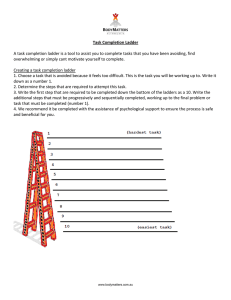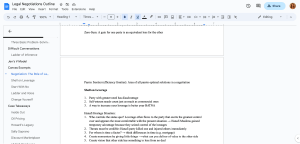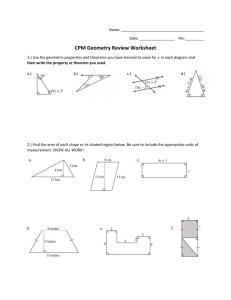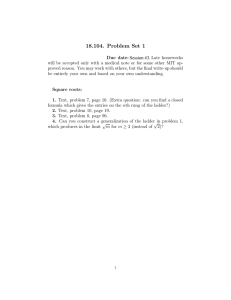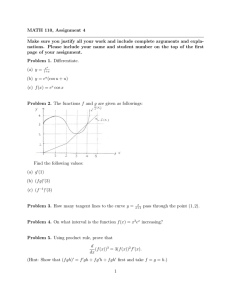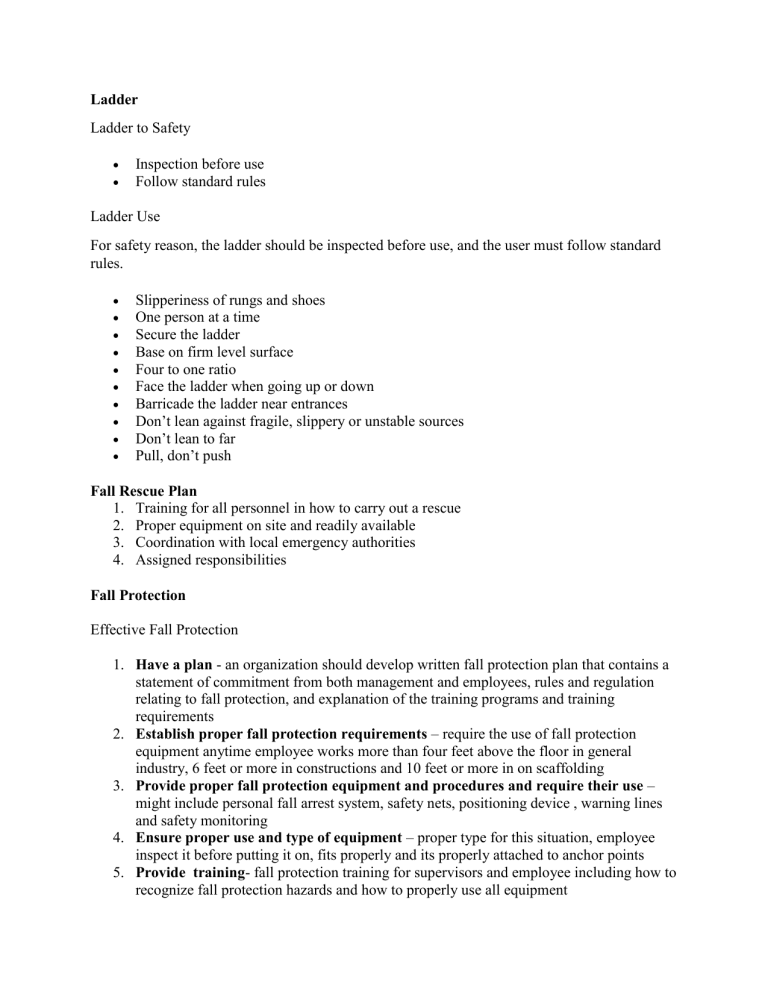
Ladder Ladder to Safety Inspection before use Follow standard rules Ladder Use For safety reason, the ladder should be inspected before use, and the user must follow standard rules. Slipperiness of rungs and shoes One person at a time Secure the ladder Base on firm level surface Four to one ratio Face the ladder when going up or down Barricade the ladder near entrances Don’t lean against fragile, slippery or unstable sources Don’t lean to far Pull, don’t push Fall Rescue Plan 1. Training for all personnel in how to carry out a rescue 2. Proper equipment on site and readily available 3. Coordination with local emergency authorities 4. Assigned responsibilities Fall Protection Effective Fall Protection 1. Have a plan - an organization should develop written fall protection plan that contains a statement of commitment from both management and employees, rules and regulation relating to fall protection, and explanation of the training programs and training requirements 2. Establish proper fall protection requirements – require the use of fall protection equipment anytime employee works more than four feet above the floor in general industry, 6 feet or more in constructions and 10 feet or more in on scaffolding 3. Provide proper fall protection equipment and procedures and require their use – might include personal fall arrest system, safety nets, positioning device , warning lines and safety monitoring 4. Ensure proper use and type of equipment – proper type for this situation, employee inspect it before putting it on, fits properly and its properly attached to anchor points 5. Provide training- fall protection training for supervisors and employee including how to recognize fall protection hazards and how to properly use all equipment Impact and Acceleration Hazards Impact hazard – is the impact of a natural or human made hazard that negatively affect society or environment Acceleration - is very important factor in the identification and analysis of appropriate fall protection plan and equipment Head protection - Designed to provide limited protection from impact primarily to the top of the head, and thereby reduce the amount of impact transmitted to the head, neck, and spin Eye and face protection – consist of safety glasses, safety goggles or face shields Foot protection Causes of injuries Impact from sharp/heavy objects Compression Punctures Electrical/heat conduction Slips Hot splashes Temperature extremes Foot protection measures Identify the hazards Identify proper footwear Require it to be worn Types of safety boots for Foot protection Steel toe Electricity resistance Slip resistant soles Rubber
